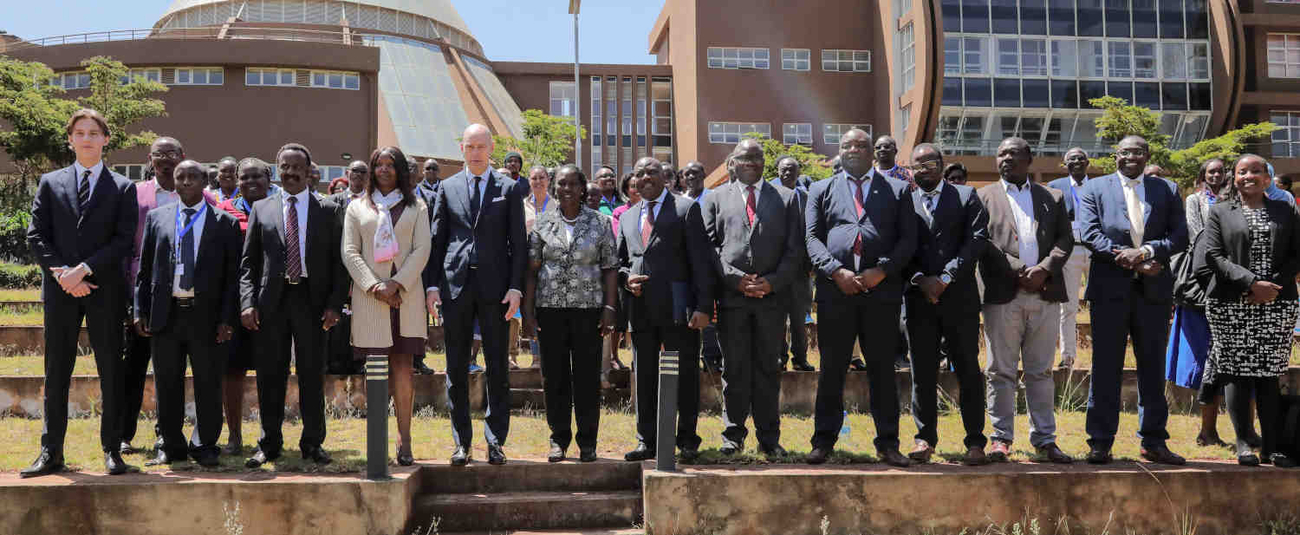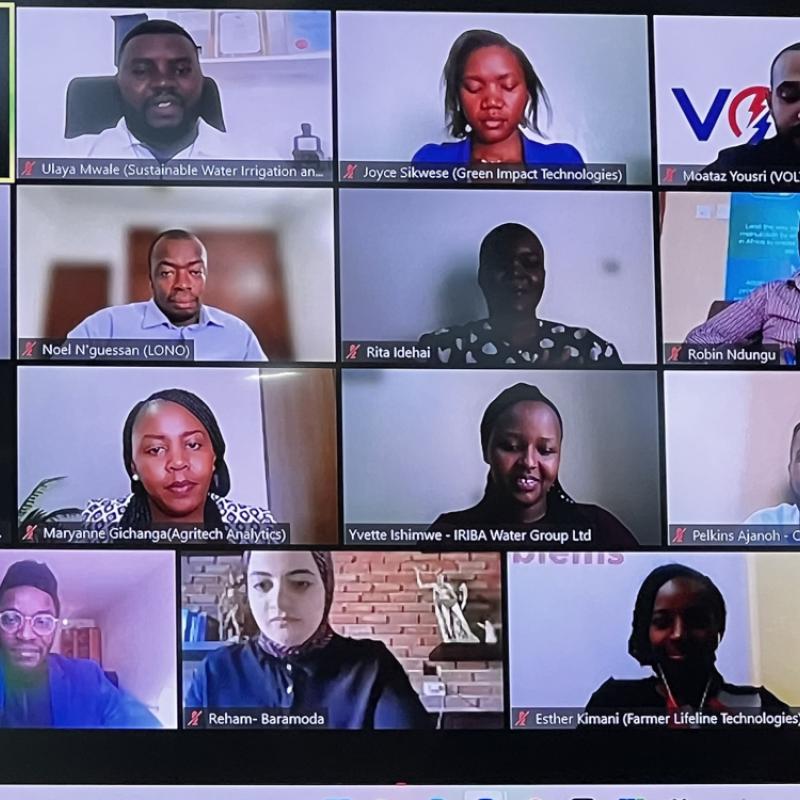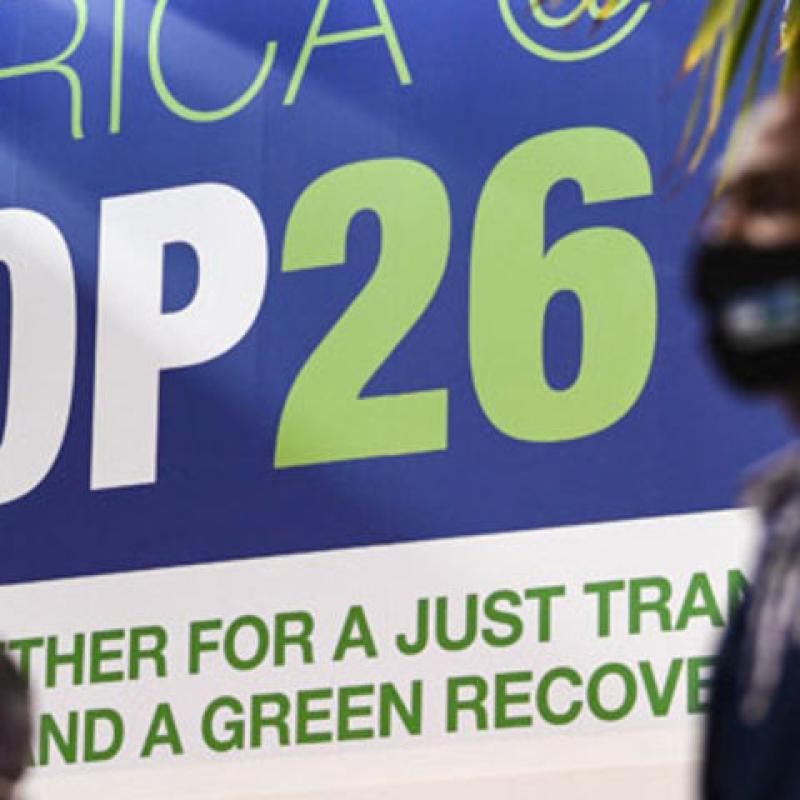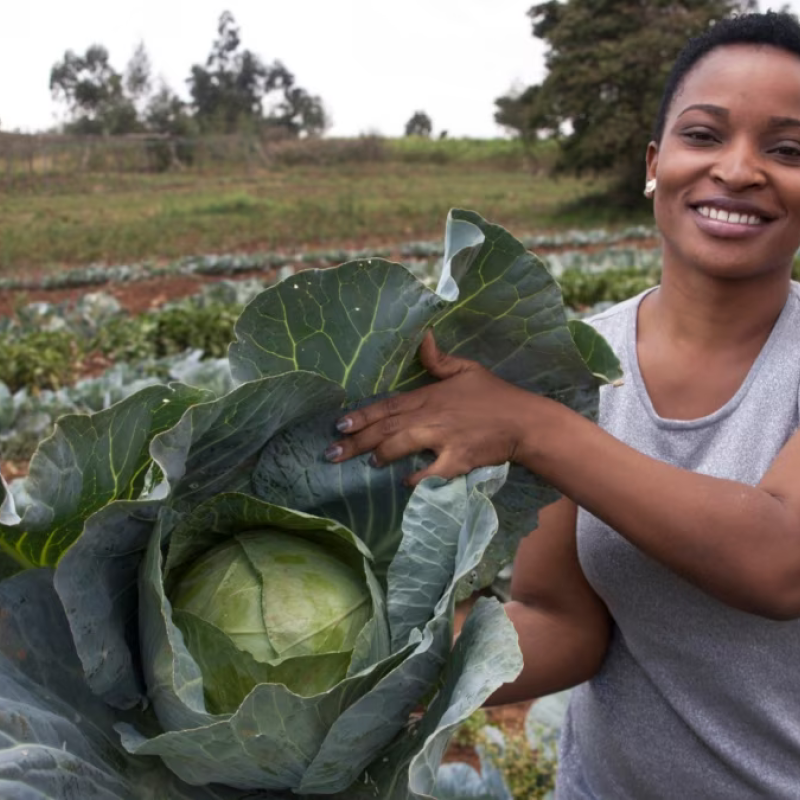
AAAP in the Media
Displaying 1 - 11 of 11
Climate risk regulation in Africa’s financial sector and related private sector initiatives
Extreme weather phenomena such as rising temperatures and the increasing frequency of droughts and floods are affecting lives and livelihoods in Africa. According to the Global Climate Risk Index 2021,1 five African countries ranked among the 10 countries most affected by extreme weather in 2019: Mozambique (first), Zimbabwe (second), Malawi (fifth), South Sudan (eighth), and Niger (ninth).
Digital Climate Adaptation Solutions Training- North Africa
Harnessing the power of technological innovations and digitalization to improve agricultural productivity and strengthen climate resilience has been recognized as one of the potential game changers to address many of pressing climate concerns and rural transformation challenges facing Africa today.
Digital climate-informed advisory services are tools and platforms that integrate climate information into agricultural decision-making. These services range from digital mobile apps, radio, and online platforms to digitally enabled printed bulletins based on climate models and extension services that utilize climate information platforms. DCAS offers crucial opportunities to build the resilience of small-scale producers in the face of worsening climate change impacts, particularly when bundled with complementary services (such as financing, input supply, market access, insurance).
The objectives of the DCAS trainings are as follows:
- Capacity enhancement for agricultural stakeholders across North Africa in DCAS
- Supporting trainees to improve their confidence and capacity to design and implement DCAS projects to reach the last mile and farmers for improved food security and climate resilience
- Facilitating knowledge/experience sharing of participants on contextual issues and approaches to scale up DCAS
- Increase the knowledge of stakeholders from across North Africa on opportunities and new approaches for the design, mainstreaming and use of digital tools and data-enabled agriculture to combat the effects of climate change
- enhancing capacity to use digital agriculture advisory services and solutions to ensure uptake by of DCAS among stakeholders in North Africa
- Over 50 Participants trained in digital agriculture and digital climate adaptation solutions
- A new cohort or platform of African public officials, researchers, farmers organizations leaders and agricultural NGO focal points with improved expertise in DCAS (for subsequent experience capitalization follow up and training)
- Training evaluation assessment report
- Improved understanding / knowledge of target stakeholders in North Africa through training and information sharing including lessons learned on the challenges, opportunities and new approaches to the design, mainstreaming and use of DCAS and data-enabled agriculture
- Enhanced capacity of selected agricultural stakeholders in public institutions and farmers groups across North Africa to use digital agriculture advisory solutions, implement digital climate smart advisory solutions, and train their members/colleagues to use DCAS tools
€100,000
Bizerte city climate stress test
Currently, Africa’s infrastructure needs are around USD 130–170 billion a year, with an investment gap of over 50–60% of that amount. Making Africa’s infrastructure resilient adds only an average of 3% to total costs, but every $1 spent could yield $4 of benefits.
The Africa Infrastructure Resilience Accelerator (Pillar 2 of the Africa Adaptation Acceleration Program (AAAP)) focuses on accelerating infrastructure resilience efforts on the continent. It will strengthen the enabling environment and provide the technical support to scale up investment in resilient infrastructure. It will also ensure that new and existing infrastructure uses nature-based solutions and create positive socioeconomic impacts and green jobs. By 2025, Pillar 2 of the AAAP aims to scale up investment at national and city level for climate-resilient infrastructure in key sectors such as water, transport, energy, and waste management, and integrate resilience in up to 50% (by value) of new infrastructure projects.
The City Adaption Accelerators (CAAs) are carrying out Rapid Climate Risk Assessments in target cities, which aim to improve climate adaptation and build resilience in urban areas.
The primary purpose of the RCRAs is to inform the identification and preparation of AfDB projects.
The RCRAs will inform the development of a comprehensive climate adaptation strategy and prioritization plan and are a crucial step towards the development of the CAA for each of the target cities. The overarching objective of the CAA is to create a shared strategic framework for GCA’s engagement in climate adaptation and resilience building in urban areas. The development objective of the CAA is to support cities and countries to strengthen their urban climate adaptation and resilience outcomes through enhanced (1) understanding; (2) planning; (3) investments; and (4) governance and capacity building.
- Outputs will inform future discussions surrounding climate adaptation investments
- GCA is demonstrating its unique value add in its ability to provide technical guidance to firms towards developing well-informed analyses
- Literature review of vulnerability and adaptive capacity assessments of cities to climate change
- Scoping of past and current initiatives and key stakeholders relevant for adaptation and resilience building in cities
- City Scan: rapid review of actions around climate hazard and risk assessments and more locally focused assessments of vulnerability and adaptive capacity
- Rapid Climate Risk Assessment: an overview of the key climate hazards and associated risks; will indicate whether an in-depth climate risk assessment is required
- City Scoping: provides insight into past and current initiatives relevant for adaptation and resilience building and identifies key stakeholders and relevant initiatives
As part of the CAA, the RCRAs will contribute to the following impacts:
- Strengthened urban climate risk management in cities and their hinterlands
- Improved climate adaptive spatial planning at the municipal and regional levels
- Enhanced water resources management for more equitable access to ecosystem benefits
- Enhanced resilience, consistency, inclusiveness and integration of urban drinking water, sanitation and solid waste management services
- Improved urban liveability and public health due to a reduction in climate risks stemming from heat stress and disease
Global Center on Adaptation, AfDB host regional forum on the future of resilient food systems in Africa

The Global Center on Adaptation (GCA) in collaboration with the African Development Bank and the Wangari Mathai Institute have concluded a three-day regional forum on the future of resilient food systems in Africa.
The Forum, called the Future of Resilient Food Systems in Africa – AAAP Digital Solutions for a Changing Climate provided training aimed at strengthening the capacity of stakeholders from across Eastern Africa to design and implement solutions to improve food security and climate resilience and to facilitate knowledge sharing among farmers on approaches to scale up the use of Digital climate-informed advisory services, or DCAS.
Digital climate-informed advisory services are tools and platforms that integrate climate information into agricultural decision-making. These services range from digital mobile apps, radio, and online platforms to digitally enabled printed bulletins based on climate models and extension services that utilize climate information platforms.
DCAS offers crucial opportunities to build the resilience of small-scale producers in the face of worsening climate change impacts. From seasonal forecasts to pest advisories, effectively designed services provide producers with the resources to adapt to climate shocks and plan for new climate conditions.
Globally, more than 300 million small-scale agricultural producers have limited or no access to such services because service provision is still fragmented, unsustainable beyond project cycles, and not reaching the last mile.
Speaking at the opening ceremony of the forum, Professor Patrick Verkooijen, CEO of Global Center on Adaptation called for urgent financial support to put Africa on the path of food sovereignty.
“Africa needs urgent support to scale up the implementation of adaptation solutions that are already yielding good results for irrigation, developing drought-resistant seeds, crops and livestock diversification, “ he said.
“Through the African Adaptation Acceleration Programme, AAAP, we are rolling out a $350 million project to build resilience for food and nutrition security in the Horn of Africa towards mobilising new digital climate technology for market information, insurance products, financial services that can and must be tailored to smallholder farmers’ needs”, he added.
Speaking on behalf of the African Development Bank’s East Africa Regional Director General, Nnenna Nwabufo, Dr Pascal Sanginga, Regional Sector Manager for Agriculture and Agro-Industries noted that the forum was timely, coming hot on the heels of the recently concluded Dakar 2 Feed Africa-Food Sovereignty and Resilience summit , organised by the African Development Bank.
“The Africa Adaptation Acceleration Program (AAAP) is already contributing to closing Africa’s adaptation gap by supporting African countries to make a transformational shift in their development pathways by putting climate adaptation and resilience at the center of their policies, programs, and institutions. There is no doubt that AAAP will be a strong component of the Country Food and Agricultural Delivery Compacts to accelerate the transformation of Africa’s food systems and build a more resilient Africa”, he said.
Professor Stephen Kiama Gitahi, Vice Chancellor of the University of Nairobi, reiterated the relevance of the forum pointing out that 70% of the population in Eastern Africa live in rural areas and depend on agriculture for their livelihoods. He encouraged the trainers to simplify the modules in a manner that removes the fear for technology and accelerate adaptation for rural farmers. Citing the legacy of late Professor Wangari Maathai he stated:
“We acknowledge that gaps exist on climate adaptation in the rural communities and those can be smartly bridged with the use of digital smart agriculture and climate innovations to create great conservation impact in our region.”
The forum brought together stakeholders from ministries of agriculture, related government agencies, public research institutions, farmer organizations, universities and non-profit organizations working on climate adaptation for food security in Eastern Africa. These included participants from Djibouti, Eritrea, South Sudan, Burundi, Rwanda, Mauritius, Tanzania, Seychelles, Sudan, Ethiopia, Rwanda and Kenya.
About Global Center on Adaptation
The Global Center on Adaptation (GCA) is an international organization which works as a solutions broker to accelerate action and support for adaptation solutions, from the international to the local, in partnership with the public and private sector. Founded in 2018, GCA operates from its headquarters in the largest floating office in the world, located in Rotterdam, the Netherlands. GCA has a worldwide network of regional offices in Abidjan, Cote d’Ivoire; Dhaka, Bangladesh and Beijing, China.
About the Wangari Maathai Institute, University of Nairobi
The Wangari Maathai Institute (WMI) for peace and environmental studies is a global centre for teaching and research on environmental management, governance, peace and conflicts and the nexus between peace and democracy. The centre was founded in 2009 with the support of the Government of Kenya (GoK), the African Union(AU) and the African Development Bank(AfDB) to celebrate and immortalize the work of the late Nobel Laurete
Prof.Wangari Maathai who was a global champion on environmental conservation and governance. The centre trains future leaders and Champions for environment. The Centre is located in the serene environment in Upper Kabete suburb of Nairobi City.
20 young African entrepreneurs bag $100,000 each to boost their climate adaptation businesses
UK gives Africa $197 million to mitigate climate change
EAC Railway Rehabilitation Support Project - Refurbishment of Kampala-Malaba Meter-Gauge-Railway
Railway lines are critical to opening up the heartland of Africa, where there is immense agricultural and economic potential. The Kampala-Malaba Meter Gauge Railway (MGR) in Uganda is part of the East African Community’s Northern Corridor. It links Ugandan capital Kampala to Kenyan coastal city Mombasa. The East African Community Railway Rehabilitation Support Project will strengthen rail services and lower transport costs in a region rich in agricultural land, manufacturing and minerals and petroleum production. The work will consist of the immediate rehabilitation of 265km of MGR railway tracks between Malaba and Mukono. This includes the line to Jinja Pier and Port Bell on Lake Victoria.
The objective of the project is to improve rail transport services on the Northern Corridor and to lower transportation costs to enhance trade competitiveness for Uganda and the EAC region. The project will add to the transport infrastructure stock in the East African Community (EAC) region and in particular Uganda to support production in agro-processing, mining, timber, petroleum, and manufacturing industries.
The East African Community Railway Rehabilitation Support Project also advances the African Union’s Agenda 2063 and three of the African Development Bank’s High 5 operational priorities: Integrate Africa, Industrialise Africa and Improve the Quality of Life for the People of Africa.
- Conduct high-resolution, asset-level climate risk and vulnerability assessment to quantify key climate risk hazards and associated risks to the planned railway line.
- Adaptation and resilience investment options appraisal to identify and appraise adaptation and resilience options, focusing on integration of nature-based solutions (NBS)
- Structuring the NBS investment options depending on the scale of NBS options in partnership with the World Wide Fund
- Capacity enhancement for resilient railway project planning and management under the AAAP Masterclass on Climate Resilient infrastructure in partnership with University of Nairobi
- Improve maritime transportation on Lake Victoria through the acquisition of new wagon ferries and construction of spurs to Port Bell and Jinja port
- Promote trade, spur industrial development and create jobs
- Stimulate growth and enhance regional integration in Eastern Africa
- Design for the Kampala multimodal hub and refurbishment of Kampala-Namanve and Tororo-Malaba sections totalling 28 kilometres.
- Directly benefit close to 1.2 million people with 40% being women
- Deepened trade and transforming East Africa into a globally competitive upper-middle-income region
- Support production in agro-processing, mining, timber, petroleum, and manufacturing industries in Uganda
- Reduced travel cost and improved on road traffic safety
- Efficient and effective transportation system
- Reduce transport GHG emissions and road maintenance costs
- Create jobs for both men and women
- Build capacity of Uganda Railway Authority
AfDB investment of USD 290.6 million, of a total of USD 397.7 million
Uganda - Water Supply and Sanitation Programme Phase III (WSSP III)
Uganda recognizes the cross-benefits of access to safe drinking water and improved sanitation and has made substantial access increase over the last decades. This has raised coverage to safe drinking water from 42% in 1991 to 64 % in 2014 and access to adequate sanitation from 51% in 2001 to 74.6% in 2014. The current coverage of water supply and sanitation in Uganda’s Central Region remains low and is constrained by the rapid population growth and increased urbanization (5.5%) linked to proximity to Kampala, the capital city.
The objective of the project is to improve the health and productivity of Uganda’s population through provision of safe water and sanitation services to target a population of 1.43m people (51.4 % women)
- Identify WSS schemes with significant capital investments that are situated in regions that are highly exposed to climate-related risks such as floods
- Carry out climate risk assessment for a select number of schemes that are highly ex-posed to floods and provide technical assistance on increasing the flood resilience of these water service provision assets including design and operation and maintenance
- Provide technical assistance to design climate related risk reduction measures through a combination of grey and green investments
- To understand the how the regional hydrological system influence on local hydrological system, a rapid desk assessment – based on globally available data - will be undertaken to identify climate hotspots. This scan will also identify existing good practices in Uganda
- Collaborate closely with focal agencies of the client government to build their capacity
- Build resilience into infrastructure projects and assets, prioritizing nature-based solutions by understanding climate risks to WSSS service delivery assets and increase flood resilience of these assets
- 5 large rural gravity-flow water system schemes (4 new and 1 rehabilitated) covering a target population of about 170,000 people
- 6 urban water supply schemes in secondary cities, targeting a population of 500,000 people
- 20 solar powered rural water supply schemes for high yielding boreholes for small communities of 1,000 - 2,000 households each
- Improved water resources management, environmental protection and catchment management
- Implementation of rural water supply infrastructure, including large gravity flow schemes (LGFS) and solar powered water schemes
- Promotion and implementation of sanitation and hygiene development
- Construction of water for production storage infrastructure comprising of earth dams and valley tanks
- Implement catchment management and environmental protection activities
USD 60 Million


